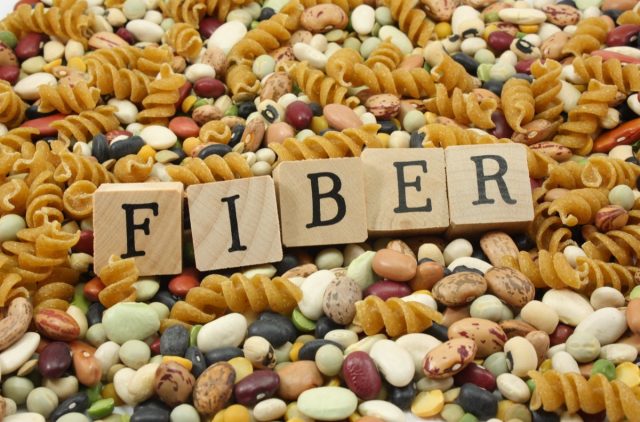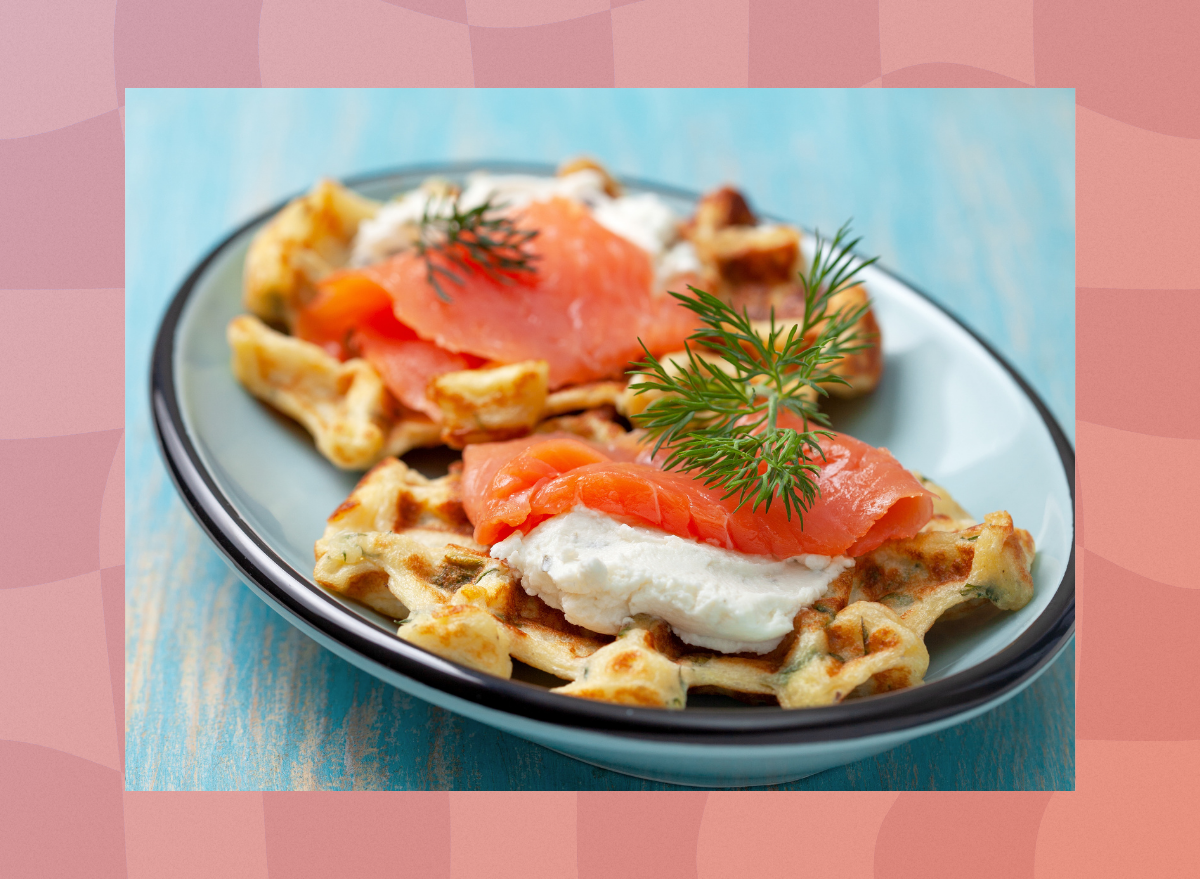With the New Year just starting, the pressure is on to make weight loss resolutions (you probably won’t keep). But what if you instead just made a few tweaks? Doctors say the most sustainable weight loss methods are the ones you’ll actually be able to do and enjoy. With that in mind, we collected 5 of the easiest ones that doctors say work, and they will help you lose visceral fat from your waistline, the dangerous fat that can squeeze your organs and take years of your life. Read on.


Ilana Muhlstein, MS, whose 2B Mindset has helped thousands lose weight in a sustained, healthy way, has a few key tips to help you keep the pounds off, outlined nicely in her book You Can Drop It. One of her core tenets is Water First. Writes Muhlstein:
“The simple fact is that most people don’t drink enough water throughout the day, even though it is the secret weapon for dropping the pounds and feeling better overall that really shouldn’t be that much of a secret. To me, water is really the igniter switch to your whole weight-loss approach. Why?
It makes you full—so you’re less likely to give into cravings, to overeat at meals, and to allow temptation to override your mindset. This is key, as it works like a nutritional voice of reason, helping you make better decisions throughout the day. Here’s one way to visualize it: Take a 16-ounce water bottle in your hand and see how it naturally feels heavy. That really demonstrates the point that water adds a nice heaviness to the stomach, which gives you a sense of calm and satisfaction before eating your food, which also helps create a healthier relationship with food.
It helps you lose weight. A study published in the American Journal of Clinical Nutrition showed that drinking more water reduced body weight after three months. And those who drank half a liter of water lost 12% (or 4 pounds) more than the group that didn’t. Another study shows that drinking half a liter of water 30 minutes before each meal resulted in a 44% greater rate of weight loss.
It helps quiet our hunger and settle those growls in our stomachs. So if you claim your ‘starving’ and the first thing you see are doughnuts, you don’t want your eyes and mouth to say, ‘Doughnuts!; You want them to say, ‘Water First!’ Drink some water, and you’ll take the edge off—keeping you from eating something you don’t necessarily need or want.
You should drink half your weight in ounces at a minimum each day. Your weight in pounds ______ ÷ 2 = ______ daily minimum goal in fluid ounces.* For example, 180 pounds ÷ 2 = 90 ounces, which is just three 2B Mindset water bottles!
Try to drink 16 fluid ounces/480 milliliters before each meal (even before your morning cup of Joe!). You’ll soon see that the more water you drink, the more weight you may lose.”


Make sure your plate has more veggies than anything else. Says Mulhstein: “‘Veggies Most’ works because of all of the benefits that come from vegetables. Packed with fiber, they help make you feel full and that’s partly what helps with greater results in weight loss. A 12-month randomized controlled trial published in the European Journal of Clinical Nutrition showed that eating more vegetables led to greater hunger satisfaction, meaning it made people feel less hungry (weight loss was related to the amount of calories coming from vegetables). So the more vegetables people were consuming, the greater weight loss results they were seeing. Another study published in the American Journal of Clinical Nutrition showed that advising people to eat big volumes of low calorie foods like veggies and soups was a more successful weight-loss strategy than advising people to restrict their portions and focus on eating less.
READ RELATED: These 11 Restaurant Chains Will Give You Free Cash When You Buy a Gift Card


When we eat food that is high in fiber, it keeps us feeling full for longer, but it also helps to decrease our body’s insulin spikes, so we can burn fat. Not only that, but eating fiber has numerous other health benefits, including decreasing our blood sugars, boosting our gut microbiome, and decreasing cholesterol (just to name a few),” says Dr. Ritu Saluja-Sharma MD. “The American Heart Association recommends eating 25-30 grams of fiber per day, and there are significant health benefits to consuming even more than that. Unfortunately, the average adult in the United States only consumes about 15 grams of fiber per day.
Here are some ideas to add more fiber into your day: Try adding a serving of berries with your breakfast. Aim to eat a serving of beans or lentils every day. Try to eat more whole grains, rather than refined grains.”


Weekend warrior syndrome is real—working out a few times a week won’t cancel out the damage of sitting down all day long (although any exercise is obviously better than none). “We know that spending long periods of time sedentary is unhealthy and a risk factor for chronic illnesses, such as type 2 diabetes and heart disease,” says Joe Henson, PhD, research associate at the University of Leicester. “Likewise, the amount of fat deposited around our internal organs may also predispose us to these diseases. Using MRI techniques and physical activity monitors we have shown that the more time spent sedentary, the stronger the association with higher levels of internal and abdominal fat. This was particularly so if the long periods of sedentary behavior were uninterrupted. Our findings also show that reaching the UK government’s target of 150 minutes of moderate intensity physical activity may offer some protection against the harmful effects of prolonged sedentary time.”


Chronic inflammation is a complex response, often described as a cascade effect of reactions in the body–including weight gain. Here’s a (very) basic breakdown of what’s going on, according to the 14 Day Anti-Inflammation Diet author Jeff Csatari:
“Something attacks. As previously mentioned, this could be anything from a pathogen (virus, bacteria, parasite) to a physical trauma (cut or bruise, sprain, burns, even frostbite) to a hypersensitivity (allergies). There are many pathways to chronic inflammation. For our purposes, it’s lifestyle: Food, etc.
The immune system responds. If you recall high school science, the body produces white blood cells (leukocytes) in response to a perceived threat. Certain leukocytes can produce molecules called cytokines, which act as a messenger saying, “Hey, we need some inflammation over here, stat.” The body goes into full attack mode with its inflammatory response. Blood is the primary delivery system for all these substances— – which is why inflammation can be so pervasive.
The Bad Guys of Chronic Inflammation go to work. The body continues to respond to “attacks,” which in our case is continuous consumption of pro-inflammatory foods, weight gain, sedentary behavior, and rampant stress. Because these lifestyle issues are themselves chronic, the body continues to respond with inflammation. The result is chronic, low-grade inflammation that eventually damages tissues (arterial walls around the heart, for just one example).”
To reduce them, avoid the five types of foods that cause inflammation, which include, according to the doctors at Houston Methodist: Red meat and processed meats, including bacon, hot dogs, lunch meats and cured meats. Refined grains, including white bread, white rice, pasta and breakfast cereals. Snack foods, including chips, cookies, crackers and pastries. Sodas and other sweetened drinks.
Source:










